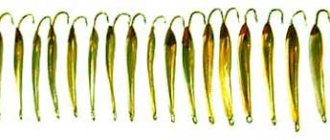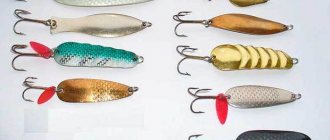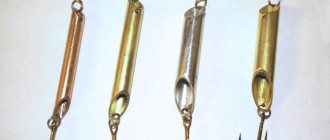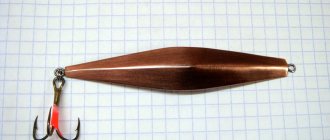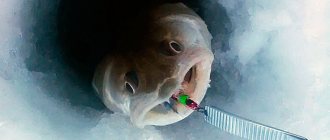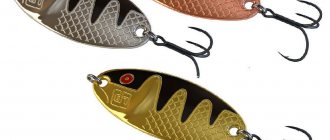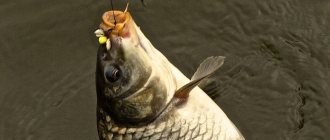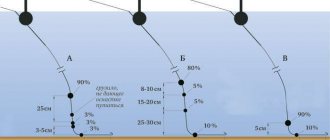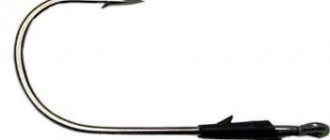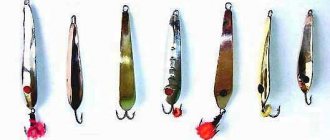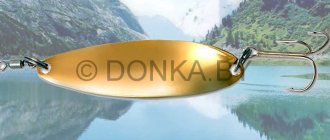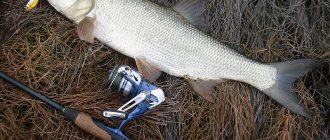Fishing for perch is one of the most exciting activities. The predator is widespread throughout Central Russia and the Urals. The fish is voracious, bites aggressively and consistently throughout the year, loves the game of bait, takes almost all baits, which makes catching a predator very exciting. Hunting for river predators in winter is worthy of special attention. We will devote this article to the consecration of winter lures for perch with our own hands with drawings.
But first, let's talk about the fish itself, its habits, and reactions in winter.
Fishing in winter, under the ice, is very exciting. The choice of gear in this case falls on those types that show sensitivity and are very delicate. But a high-quality original bait is only part of the success.
The activity of the fisherman, knowledge and ability to put into practice the principle of the game of this or that profit, the speed of fishing the holes, feeding in the holes, knowledge of habitats, the reaction of fish to weather conditions - all this matters in obtaining the result.
It is impossible to predict the outcome of fishing in cold weather. Sometimes, after traveling for kilometers, you can return empty-handed, and sometimes, you can stand at one hole for the entire time allotted for hunting and return with buckets full of fish.
Winter fishing begins in December; this moment occurs differently in different regions, but the main landmark is the appearance of the first ice, after which the golden time for fishing begins a week later. Perch is voracious, and at this time it willingly bites on everything indiscriminately.
The fish is schooling, which can be found during this period in shallow places, on the elevations of the reservoir. In sunny, almost windless weather with slight frost, the best catch is obtained. The more winter takes hold, the lower the ambient temperature drops, the more the behavior of the striped bully changes.
At times it becomes passive, the flocks are small, the predator sinks lower and lower to the bottom, where it is warmer and there is more dissolved oxygen in the water. But there is a big advantage of the dry winter period, because... At this time, the probability of catching a trophy specimen increases.
Where and when is perch caught in winter?
In cold weather you can meet a predator anywhere. Fish are voracious by nature and are in constant search of food, moving around the reservoir for prey. There are also favorite places. During periods of warming, the river robber can appear in shallow water, close to the shore, where there is a lot of vegetation. Cold weather forces the fish to go lower to the bottom.
The most productive fishing occurs at a depth of about 2 meters. It should be remembered that the hunter should look for it in places where there is a sandy bottom, near the border of reed thickets, on underwater hills, where snags and trees that have fallen into the water accumulate.
Perch is not picky about weather conditions, but it happens that in windy weather or when the atmospheric pressure changes, fishing may not work. The predator bites most actively in the morning; during the day and evening the catch will be smaller. But it is impossible to speak unequivocally about the effectiveness of early fishing. In cases where the fish did not bite in the morning, you can count on a bite in the afternoon or in the evening.
Nowadays, there are a large number of types of winter attachments on the market. But with all the variety of choice of ready-made baits, the popularity of hand-made baits does not fall.
Firstly, you need to be able to play with newfangled types of spinners; awkward, inept behavior leaves a negative impression. In addition, not all manufacturers comply with manufacturing technology; many skimp on materials, which leads to disruption of the trajectory of the bait in the water. In general, fishing may not work out if low-quality bait is used.
There are a large number of types of homemade spinners for perch with your own hands from scrap materials in a short period of time.
Spinner "Boat"
If we talk about spinners designed for catching perch in winter, here you can use various vertical baits that are perfect for fishing at different depths, with different flow speeds and different fishing styles.
In particular, in shallow water, where there is almost no current, the so-called first ice will be most suitable. They are characterized, first of all, by minimal weight, which allows them to glide at minimal speed and easily deviate from the vertical axis even at shallow depths.
How to catch more perch?
I have been active fishing for quite some time and have found many ways to improve the perch bite. But the most effective was and remains the BITE ACTIVATOR FOR PERCH. It attracts fish in cold and warm water with the help of pheromones included in the composition and stimulates their appetite. Suitable for both summer and winter fishing.
Main characteristics of winter spinners
There are specific requirements for baits for ice fishing for perch:
Depending on the depth at which the fish are caught, bait is selected. The dimensions of winter lures for perch with your own hands are about 40mm. During the deep winter period, when a school of predators descends to a depth of 3 m, it is better to catch it with a smaller spoon, about 30 mm. But for underwater hunting at great depths, you should choose long spoons, up to 60 mm. They are perfect for catching striped bully in pools and depressions on the bottom.
Of course, the shape of the bait should resemble a live fish. There are many modifications, such as narrow oblong, diamond-shaped ones, like a drop of profit.
The weight depends on the size of the spoon itself, and, naturally, on the fishing conditions, it can vary from 2 - 16 grams.
- The direct relationship is obvious: the shorter the length of the nozzle, the less its weight.
- Based on the hook attachment, baits with a fixed hook are distinguished, i.e. rigid fastening. And they are distinguished by their special catchability with a playing type of fastening. The hook can be single, double or triple.
- Rigid fastening of the hook is achieved by soldering it to the body. Non-fixed fastening is obtained by attaching the hook to the winding rings or to the chain. This type of attachment is optimal during periods when the fish is passive. The movements of an artificial fish can stir up a striped hunter.
- A fixed hook is used during stable play, when the predator is especially hungry.
- According to the material from which homemade baits are made: it can be any available elements.
- There are many variations of spinners made from a spoon, from a piece of tube, from a hairpin, etc. But sheet blanks made of copper, brass, and stainless steel are more often used.
Perch is a predator. It’s not for nothing that people call him a bully. Fish loves the game. Reacts to bright colors, shimmer and shine. Homemade specimens are made from different metals, iridescent: silver/gold. To attract attention, an attack point is placed on the hook. Perch loves beads, cambrics, and bright threads attached to a bait hook.
Spinner for catching pike perch in winter at medium and great depths
Lures designed for pike perch are fundamentally no different from products designed for perch. The only key difference is the need to use a thinner hook, since pike perch swallow bait more deeply and greedily than perch.
READ Do-it-yourself fluorocarbon leash, it turns out 1 in 1 like store-bought ones
In this regard, it is necessary that the hook slides easily into his throat.
Pike perch is a very cautious fish, so you should make a lure that will be as similar as possible to a real fish, otherwise it may not bite at all. You can take some well-known example as a basis.
In principle, the entire technological process for making a spinner exactly repeats the work aimed at producing bait for perch.
The hook and loop should be soldered tightly without the possibility of replacement , since pike perch is quite a strong fish; it can bite off the screwed tackle or even tear it off during one of the strong jerks. You need to load the spoon closer to the tee - this way you will be able to achieve its high-quality play in the water column; this is done with the help of lead solder.
Winter lures for perch by type
Lures for fishing under ice are divided according to the quality of wiring, game and distribution of the center of gravity into:
- Vertical or bottom. The center of gravity of these is concentrated in the lower part. They play vertically without deviations from the trajectory. When I land, they lift up everything that is at the bottom, thereby attracting additional attention from the predator.
- Gliding, petal-shaped. Due to the configuration, during play they deviate greatly, oscillating, from the center of the hole.
- Loose, or those in which the center of gravity can be redistributed from side to side. They are lowered to the bottom in a horizontal position.
- The step is those baits whose shape is curved, similar to a crescent. The hook is rigidly fixed. The bait moves vertically towards the bottom, reminiscent of descending steps, which is where this species got its name.
Let's look at the main, most popular types of spinners and how to make a spinner for perch.
To work, you should have the following tools: metal scissors, hammer, awl, rasp, sandpaper.
Carnation spinner
This type of bottom spoon for perch with your own hands is one of the most popular. There are a lot of variations in shape. It can be a triangle or an oval. The edges can be either sharp or rounded. The basic idea is that the bait should resemble a small fish. Manufacturers adhere to this principle when making a spinner that looks like a fry.
An imitation fish should attract the attention of a predator, so copper and stainless steel are ideal materials for homemade baits.
To make a nail type spinner you will need a sheet of copper, a hook, solder and soldering acid, and wire. A drawing is made on a copper base, according to which two parts are cut out. The wire is used to form a hook attachment, which is soldered to one of the blanks.
The second workpiece is bent and soldered to the first. The resulting voids are filled with solder. Holes are made for the fishing line. The body of the artificial fish is carefully cleaned, acquiring smooth edges. The surface is polished. Now the carnation is ready.
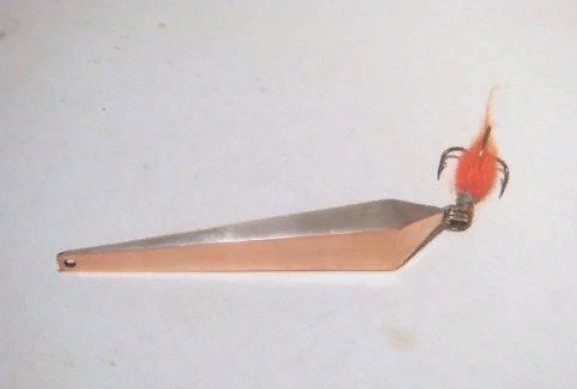
tube
A very catchy bait, easy to make and does not require large material costs. The design is so simple that experienced fishermen stock up on bait in large quantities in case the line breaks, which is not uncommon when catching a predator in snags.
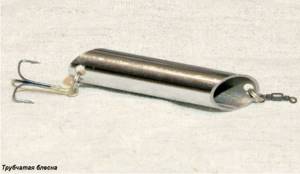
The tubes are divided into:
- Hollow specimens. This design is effective when fishing at depth and in currents, and is very maneuverable when moving sideways.
- Tubes with sealed top. Popular view. When retrieving, the bait may deviate to the side due to the resistance of the water mass. The advantage of the bait is that it plays aggressively, which the perch likes, and its hollow design makes a sound, which is effective in the dead of winter, when the striped hunter is passive. The fish reacts with interest to noise.
- Loaded baits. They are not particularly popular and are used in rare cases when it is necessary to cast bait far away in strong wind conditions. They got their name because part of the tube is filled with metal for weighting.
- Noise tube. Popular model because Perch responds well to noise. Both ends of the tube are sealed. To obtain a noise effect, small balls, such as shot, are placed inside the tube before sealing. I react to the sound the bait makes, and the perch actively attacks.
- Composite spoons, consisting of several parts, usually 3. This type of spoon is very catchy, its movement resembles the movement of a live fish.
A handmade spinner tube made from various tubes. It can be either aluminum or copper. For manufacturing you will need solder, abrasive material, tees, winding rings, fins - stabilizers.
There are no established sizes that show the greatest effectiveness. The size is selected according to weather conditions, time of year, and landscape features of the reservoir. The same length of a product made from different materials that differ in weight will play out differently. The cutting angle of the bait also matters.
It is best to test this type of bait in a real body of water.
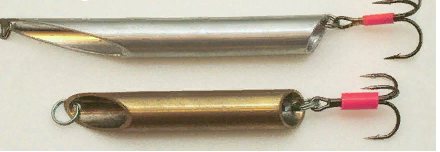
This spinner is very easy to make. A piece 50-90 mm long is cut from a workpiece made of aluminum or other material, 6-9 mm in diameter. The edges are cleaned, a bevel is made on one side and an angle on the other. Holes are made at the edges for attaching the winding ring on one side, and the tee and fin on the other side.

A loaded spoon is made according to the same principle, but only molten lead is poured into the body of the bait either on one side or on both.
There is a noticeable pattern: in winter, when the fish are passive, a shorter tube-type bait is used.
Winter spinner Maropedka
This bait refers to vertical baits. Very catchy and very loved by fishermen.
First of all, an unusual name, Maropedka. Secondly, the simplicity of the design makes it easier to do it yourself. And thirdly, profit is very effective.
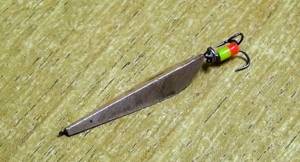
The name has its own history, because... its inventors collected in this specimen the characteristics of a diamond, a torpedo and a Matveychikov spinner. Hence the complex name Maropedka. The length of winter specimens is from 30 mm, the wings turn up to 120 degrees. The most effective baits for perch, as well as other types of baits, are 40 mm long. The bend of the wings is optimal at an angle of 90 degrees. The greater the depth, the greater the weight of the bait.
This model of profit is easy to manufacture.
The necessary tools should be: soldering iron, metal scissors, vice, pliers, file, sandpaper.
You will need a metal blank up to 0.5 mm thick. It can be either stainless steel or bronze, copper, or brass.
Below is a drawing of a spinner for perch.
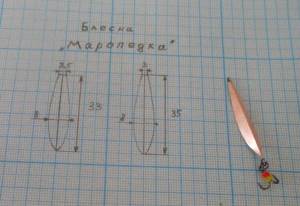
A rectangular blank should be cut from the prepared sheet. Then make markings on the plate - in the center to make a bend, on the wide part draw lines for cutting.
The resulting plate should be bent with a hammer, and the same should be done by turning the product over. We bring the product to a trapezoid shape.
Using metal scissors, the platinum is cut according to the markings. The edges are aligned.
Solder is applied to the inside. Solder the ears. Using tin we achieve weighting of the product. When securing the hooks with tin, fill the remaining voids. Next, we clean out all the irregularities.
Minsk spoon
This type of spinner is very interesting from a design point of view. It has an elongated shape, reminiscent of a living fish: the tail is thin, on the other side the body expands. The Minsk spinner is two plates of different materials and different colors fastened together. Sizes from 2-6 cm, weight up to 5 g. There are two types of hook fastening: rigid and freely suspended.
For manufacturing, you will need two blanks from metals of different colors: copper and stainless steel. The thickness of the plates should vary. Two blanks, different in size, are cut out of them.
The full article about making the Minsk spinner is on this page
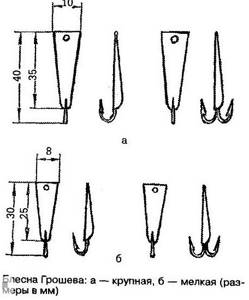
The resulting plates are leveled with a hammer, and the edges are smoothed with a file.
On one side, the workpiece is tinned with a soldering iron. Then the blanks are fastened together. Next, the resulting product is cleaned, excess and smudges are removed.
In the wide part in the center there is a hole for attaching the hook, on the opposite side there is a hole for attaching the winding ring. The hook fastening can be either free or fixed. Each option has its pros and cons. The type of spinner should be selected based on the characteristics of the reservoir and weather conditions.
Spinner Matveychikova
At first glance, this type of winter lure for perch with your own hands with a drawing may seem simple. It is made of yellow metals and may have a silver coating. The length is standard, like many perch baits - 40 mm. Like most baits, the shape of the spoon resembles a small fish. The effect when catching is as if the prey is running away. This bait should be used in bodies of water with weak currents. The bait is very catchy. And it was originally created for sport fishing.
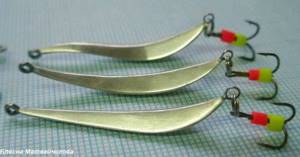
Matveychikov's spinner in its classic design is up to 40 mm long and 9-10 mm wide. The body of the bait is curved in a special way and has an extension towards the tail.
Often this sports attachment is made of non-ferrous metal. Solder makes up the second part. Like any homemade item, there can be a lot of variations, and everything depends on the imagination and experience of the master.
To make a spinner with your own hands, you will need a piece of copper or other yellow metal. Before manufacturing, a drawing should be made, which then needs to be transferred to the workpiece.
For a spinner of this type, there is an established, experience-tested size. You should not deviate from the parameters, because... this will entail a change in the quality of the game.
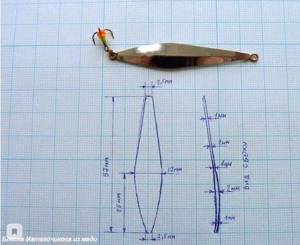
The drawing is transferred from paper to metal, the workpiece is cut out, then a line is marked in the middle. A line is made along it with a sharp object, perhaps an awl. On the side of the wide edge, a mark is placed at a distance of about 13 mm and a line is also drawn with a sharp object.
Two notches are placed opposite each other 5 mm from the center. Excess material around the edges is cut off. The workpiece is bent along the lines up to 90 degrees. Next, a line is drawn along the notch at a distance of 5 mm. Using a sharp object, the workpiece is cut along the two notches made earlier. Using metal scissors, the corners are cut. As a result, we get the product as in the drawing.
Cleaning the corners. We bend the product. We solder the hook from below to the thick part of the spoon. We form a loop using wire and solder it on top from the narrow part. We bring the spoon to aesthetic beauty and polish it.
Homemade spinner for catching winter pike perch - “Half Diamond”
This bait is made from copper sheet. First, markings are made on the copper plate. The most convenient way to do this is with the help of some sharp object. You can cut it using metal scissors; trim around the edges by about a couple of millimeters.
One side is thoroughly cleaned using fine-grained sandpaper. It will later be used for soldering. Here a small groove is made in the central part.
Along it, the workpiece is folded in half so that the angle is around 120 degrees . Sharp corners are connected to each other and carefully soldered. Do this as carefully as possible; in the future you will have to remove excess solder using a small file.
Small rings are made from thin wire and soldered, one on each side. the entire boat of the future spinner is filled with solder, and then polished with a special paste. A durable tee is attached to one side.
